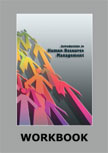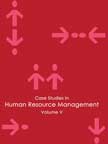Human Resources Accounting in Infosys
|
|
ICMR HOME | Case Studies Collection
Case Details:
Case Code : HROB031
Case Length : 14 Pages
Period : 1990 - 2002
Pub Date : 2003
Teaching Note :Not Available
Organization : IBM
Industry : Information Technology
Countries : USA
To download Human Resources Accounting in Infosys case study
(Case Code: HROB031) click on the button below, and select the case from the list of available cases:

Price:
For delivery in electronic format: Rs. 300;
For delivery through courier (within India): Rs. 300 + Rs. 25 for Shipping & Handling Charges
» Human Resource and Organization Behavior Case Studies
» HRM Short Case Studies
» View Detailed Pricing Info
» How To Order This Case
» Business Case Studies
» Area Specific Case Studies
» Industry Wise Case Studies
» Company Wise Case Studies

Please note:
This case study was compiled from published sources, and is intended to be used as a basis for class discussion. It is not intended to illustrate either effective or ineffective handling of a management situation. Nor is it a primary information source.
Chat with us

Please leave your feedback

|
|




<< Previous
Valuing Human Resources Contd...
|
Stock market analysts felt that the 'comprehensive disclosure policy' was
becoming a differentiating factor among companies in various industries. Yezdi
H. Malegam, managing director, S.B. Billimoria & Company commented, "In the last
few years, people are realizing that their intangible assets are worth much more
than their tangible ones. Now an attempt is being made to put a value to these
intangibles, and to bring these hidden values to book."
Analysts felt that HRA was an investor-friendly disclosure, and assured
stakeholders that the company had the right human capital to meet its future
business requirements.
|

|
Background Note
The assets of an organization could be broadly classified into tangible and
intangible assets. Tangible assets referred to all the physical assets which
could be presented in the balance sheet including plant and machinery,
investments in securities, inventories, cash, cash equivalents and bank
balance, marketable securities, accounts and notes receivables, finance
receivables, equipment on operating leases, etc.
|
|
Intangible assets included the goodwill, brand value
and human assets of a company. The human assets involved the
capabilities, knowledge, skills and talents of employees in an
organization.
In the past, less importance was given by organizations to value
their human assets. Moreover, it was also considered difficult to
value them since there were no defined parameters of valuation.
Companies did not value human resources as these were never treated
as an asset in the past. All investments related to employees,
including salary as well as recruitment and training costs were
considered as expenditures. |
In addition, accountants also felt that the stakeholders2
of a company may not accept the concept of placing a monetary value on human
resources.
The importance and value of human assets started to be recognized in the early
1990s when there was a major increase in employment in firms in service,
technology and other knowledge-based sectors3.
In the firms in these sectors, the intangible assets, especially human
resources, contributed significantly to the building of shareholder value. The
critical success factor for any knowledge-based company was its skilled and
intellectual workforce.
Excerpts >>
|
|










